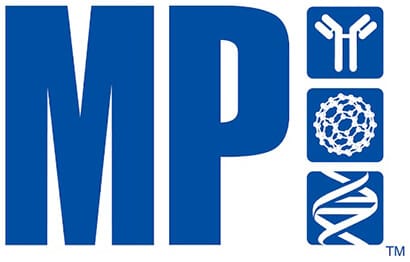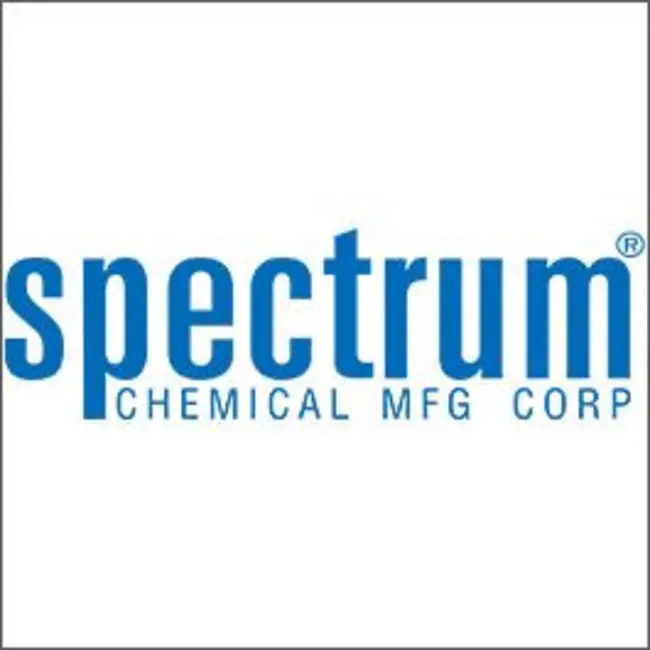GenScript Biotech
Showing 601–650 of 2554 results
-

CHO-K1/PD-L1 Stable Cell Line
$7,331.25 Add to cart View Product DetailsRecombinant CHO-K1 cells stably overexpress Homo sapiens programmed death-ligand 1 (PD-L1) on the cell surface. The surface expression is validated by FACS analysis. This cell line is recommended for cell-based binding assay to screen antibodies against PD-L1 or to measure binding affinity between PD-L1 and anti-PD-L1 antibodies.
-

CHO-K1/PD-L2 Stable Cell Line
$7,331.25 Add to cart View Product DetailsProgrammed cell death 1 ligand 2 (PD-L2) is a protein that in humans is encoded by the PDCD1LG2 gene. PDCD1LG2 has also been designated as CD273 (cluster of differentiation 273). Inhibitory molecules of the B7/CD28 family play a key role in the induction of immune tolerance in the tumor microenvironment. The programmed death-1 receptor (PD-1), with its ligands PD-L1 and PD-L2, constitutes an important member of these inhibitory pathways. PD-L2 expression was initially thought to be restricted to antigen-presenting cells such as macrophages and dendritic cells (DCs). PD-L2 expression can be induced on a wide variety of other immune cells and nonimmune cells depending on microenvironmental stimuli.
-

CHO-K1/PRLHR Stable Cell Line
$7,331.25 Add to cart View Product DetailsThe prolactin releasing hormone receptor PRLHR also named PrRP receptor is a G-protein coupled receptor that binds the prolactin releasing hormone. RT-PCR analysis showed expression of PRLHR in the human brain, pituitaries, normal portions of adrenal glands and various tumor tissues. Northern blot analysis showed high expression of PRLHR only in tumor tissues of pheochromocytomas, indicating that PRLHR expression is high in pheochromocytomas. The present study has shown that PRLHR mRNA was widely expressed in the brain tissues, pituitaries, adrenal glands and various tumors. The high expression of PRLHR receptor in pheochromocytomas suggests potential pathophysiological roles of PRLHR in these tumors
-

CHO-K1/PTAFR Stable Cell Line
$7,331.25 Add to cart View Product DetailsThe platelet-activating factor (PAF) receptor (PTAFR) is a G protein coupled receptor that signals through multiple pathways and mediates several cellular responses including cell motility, smooth muscle contraction, and releases of cytokine and leukotriene (Stafforini et al., 2003). In humans, various diseases have been associated with PAF, such as allergic asthma, endotoxic shock, atherosclerosis and psoriasis.
-

CHO-K1/PTH1/Gα15 Stable Cell Line
$7,331.25 Add to cart View Product DetailsParathyroid hormone (PTH)/PTH-related peptide (PTHrP) receptor (PTHR1) is a G protein coupled receptor which mediates the actions of both amino-terminal PTH and PTHrP fragments. The most abundant expression of PTHR1 is found in renal tubular cells and in osteoblasts, where the PTH/PTHrP receptor mediates the endocrine actions of PTH, and in prehypertrophic chondrocytes of the metaphyseal growth plate, where it mediates the autocrine/paracrine actions of PTHrP. Intact PTH (PTH 1-84) is compounded by a peptide of 84 amino acids (AA), the amino-terminal sequence, constituted by the first 34 AA (N-terminal structure), is necessary for its action.
-

CHO-K1/Spike Stable Cell Line
$6,468.75 Add to cart View Product DetailsRecombinant CHO-K1 cells stably overexpress human SARS-CoV-2 spike protein on their surface. The surface expression of SARS-CoV-2 spike protein is validated by FACS analysis. This stable cell line product is designed for screening antibodies against the SARS-CoV-2 spike protein, as well as measuring binding affinity and stability of antibody-based biologics that bind with spike protein. GenScript also offers spike protein expressing HEK293T stable cell line (Cat. No. M00804) for SARS-CoV-2 study.
-

CHO-K1/SST1/Gqi5 Stable Cell Line
$7,331.25 Add to cart View Product DetailsSomatostatin acts at many sites to inhibit the release of many hormones and other secretory proteins. The biologic effects of somatostatin are probably mediated by a family of G protein-coupled receptors that are expressed in a tissue-specific manner. SST1 receptor is a Gi/Go-coupled GPCR which is expressed in pancreatic islets, pituitary, Cerebellum (Purkinje cells), frontal cortex (pyramidal cells), hippocampus (CA1-4 subfields and some granule cells of the dentate gyrus). It inhibits cAMP accumulation and stimulates tyrosine phosphatase activity, it also can antiproliferation.
GenScript’s SST1-expressing stable cell line was made in CHO-K1/Gqi5 host cell and optimized for calcium assays. -

CHO-K1/SST2/Gα15 Stable Cell Line
$7,331.25 Add to cart View Product DetailsSomatostatin acts at many sites to inhibit the release of many hormones and other secretory proteins. The biologic effects of somatostatin are probably mediated by a family of G protein-coupled receptors that are expressed in a tissue-specific manner. SST2 is a member of the superfamily of receptors having seven transmembrane segments and is expressed in highest levels in cerebrum and kidney. Studies showed the involvement of the SST2 receptor in the inhibition of glucagon secretion.
-

CHO-K1/SST3/Gα15 Stable Cell Line
$7,331.25 Add to cart View Product DetailsSomatostatin receptors (SSTRs), a family of seven transmembrane (TM) domain G-protein-coupled receptors having five distinct subtypes (termed SSTR1-5), are activated by somatostatin secreted from the nerve and endocrine cells. SSTRs are widely expressed in many tissues, frequently as multiple subtypes that coexist in the same cell. With expressions in a tissue-specific manner, SSTRs are involved in the regulation of secretion of insulin, glucagon, and growth hormone as well as cell growth induced by neuronal excitation in both the central and peripheral nervous systems. The five receptors share common signaling pathways such as the inhibition of adenylyl cyclase, activation of phosphotyrosine phosphatase (PTP), and modulation of mitogen-activated protein kinase (MAPK) through G-protein-dependent mechanisms. Aberrant expression of somatostatin receptors is known to be involved in a large number of human tumors. The human medullary thyroid carcinoma cell line TT expresses all SSTR subtypes. SSTR3 mRNA is detected in the brain and pancreatic islets. SSTR3 uniquely triggers PTP-dependent apoptosis accompanied by the activation of p53 and pro-apoptotic protein Bax, and displays acute desensitization of adenylyl cyclase coupling.
-

CHO-K1/SST4/Gα15 Stable Cell Line
$7,331.25 Add to cart View Product DetailsSomatostatin acts at many sites to inhibit the release of many hormones and other secretory proteins. The biologic effects of somatostatin are probably mediated by a family of G protein-coupled receptors that are expressed in a tissue-specific manner. SST4 is a member of the superfamily of receptors having seven transmembrane segments and is expressed in highest levels in fetal and adult brain and lung. SST4 enhances AMPA receptor-mediated currents in the hippocampus, and interacts with the SST2 receptor.
-

CHO-K1/SST5/Gα15 Stable Cell Line
$7,331.25 Add to cart View Product DetailsSomatostatin receptors (SSTRs), a family of seven transmembrane (TM) domain G-protein-coupled receptors having five distinct subtypes (termed SSTR1–5), are activated by somatostatin secreted from the nerve and endocrine cells. SSTRs are widely expressed in many tissues, frequently as multiple subtypes that coexist in the same cell. With expressions in a tissue-specific manner, SSTRs are involved in the regulation of secretion of insulin, glucagon and growth hormone as well as cell growth induced by neuronal excitation in both the central and peripheral nervous systems. The five receptors share common signaling pathways such as the inhibition of adenylyl cyclase, activation of phosphotyrosine phosphatase (PTP), and modulation of mitogen-activated protein kinase (MAPK) through G-protein-dependent mechanisms. Aberrant expression of somatostatin receptors is known to be involved in a large number of human tumors. The human medullary thyroid carcinoma cell line TT expresses all SSTR subtypes. SSTR5 induces cell cycle arrest via PTP-dependent modulation of MAPK, which is associated with the induction of the retinoblastoma tumor suppressor protein and p21. In addition, SSTR 5 displays acute desensitization of adenylyl cyclase coupling and undergoes rapid agonist-dependent endocytosis.
-

CHO-K1/TIGIT Stable Cell Line
$7,331.25 Add to cart View Product DetailsTIGIT (T cell immunoreceptor with Ig and ITIM domains) was recently characterized as an inhibitory receptor, which is expressed mainly on NK, Treg, CD8+ T, and CD4+ T cells. TIGIT harbors an immunoglobulin tail tyrosine (ITT)-like phosphorylation motif and an ITIM (immunoreceptor tyrosine-based inhibition motif) in its cytoplasmic tail. The poliovirus receptor (PVR or CD155) was identified as the physical ligand of TIGIT with high affinity, and PVRL2 (Nectin2 or CD112) also binds to TIGIT with a weaker binding capacity. TIGIT/PVR engagement suppresses T cell activation through IL-10 secretion mediated by dendritic cells. Furthermore, TIGIT also exerts an intrinsic inhibitory function to T cell activation.
-

CHO-K1/Tim3 Stable Cell Line
$7,331.25 Add to cart View Product DetailsT cell immunoglobulin mucin-3 (TIM-3) is a member of the T-cell Immunoglobulin- and Mucin-domain-containing family of type I membrane glycoproteins that regulate autoimmune and allergic disease. TIM-3 is selectively expressed on Th1 cells and interacts with galectin-9. It negatively regulates Th1 responses and affects macrophage activation. The 280 amino acid mature human TIM-3 contains a V-type Ig-like domain that shows multiple polymorphisms, followed by a mucin-like domain in the 171 amino acid extracellular region, which shares 60% amino acid identity with mouse TIM-3 ECD.
-

CHO-K1/TRH1 Stable Cell Line
$7,331.25 Add to cart View Product DetailsThyrtropin-releasing hormone receptor1 (TRH1) is a member of G-protein coupled receptor family A. This protein is a receptor for Thyrtropin-releasing hormone (TRH). Human TRH1 is expressed in lymphocytes, pituitary gland and CNS. It can stimulate the releasing of prolactin (PRL), thyrotropin (TSH). TRH1 receptor knockout mice exhibit a slightly reduced growth rate, considerable decrease in serum T3, T4, and prolactin levels but no alteration of thyroid-stimulating hormone levels.
-

CHO-K1/UT2/Gα15 Stable Cell Line
$7,331.25 Add to cart View Product DetailsThe Urotensin II receptor (UT2), also named UTS2R, GPR14, which is expressed in endothelium, smooth muscle, heart and pancreas. Pharmacological inhibition of urotensin II receptor interactions prevents renal insufficiency following renal artery ligation. .
-

CHO-K1/V1B Stable Cell Line
$7,331.25 Add to cart View Product DetailsThe antidiuretic hormone arginine vasopressin (AVP) receptors are G protein-coupled receptors which consists of at least three types: V1A (vascular/hepatic) and V1B (anterior pituitary) receptors, which act through phosphatidylinositol hydrolysis to mobilize intracellular Ca2+; and V2 (kidney) receptor, which is coupled to adenylate cyclase. V1B receptors are expressed in anterior pituitary where they mediate the release of ACTH . Its peripheral actions, such as antidiuresis, contraction of vascular smooth muscle, and stimulation of hepatic glycogenolysis are well characterized.
-

CHO-K1/V2/Gα15 Stable Cell Line
$7,331.25 Add to cart View Product DetailsArginine vasopressin (AVP) is a cyclic nonapeptide that acts by binding to a family of vasopressin receptors that includes V1a, V1b, and V2 receptors. In particular, V2 receptors are expressed in kidney where vasopressin exerts its antidiuretic action. V1a and V1b couple to Gq and calcium release, whereas V2 couples to Gs. Mutations in V2 result in X-linked nephrogenic diabetes insipidus, a syndrome in which the kidney is unable to concentrate urine, leading to dehydration and hypernatremia. Conversely, elevated levels of AVP lead to hyponatremia in the syndrome of inappropriate antidiuretic hormone secretion (SIADH), congestive heart failure or cirrhosis, and V2 selective antagonists have been developed to treat these conditions.
-

CHO-K1/VISTA Stable Cell Line
$7,331.25 Add to cart View Product DetailsRecombinant CHO-K1 cells stably overexpress V-domain Ig suppressor of T cell activation (VISTA) on the cell surface. The surface expression of VISTA is validated by FACS analysis. This cell line is designed for cell-based binding for screening antibodies binding with VISTA and evaluating target binding affinity.
-

CHO-K1/VPAC1/Gα15 Stable Cell Line
$7,331.25 Add to cart View Product DetailsThe widespread neuropeptide vasoactive intestinal peptide (VIP) has two receptors VPAC1 and VPAC2. The vasoactive intestinal polypeptide receptor VPAC1 is Gs-coupled GPCRs expressed in the lung, prostate, peripheral blood leukocytes, liver, brain, small intestine colon, heart, spleen, placenta, kidney, thymus, and testis.
-

CHO-K1/VPAC2/Gα15 Stable Cell Line
$7,331.25 Add to cart View Product DetailsThe Vasoactive intestinal polypeptide receptor 2 (VPAC2) is a Gs-coupled receptor expressed in the stroma of uterus and prostate; smooth muscles in gastrointestinal tract, seminal vesicles and skin; blood vessels; thymus. VPAC2 is an essential regulator of the circadian pacemaker of the hypothalamic suprachiasmatic nuclei.
-
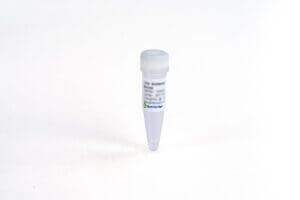
CK-MB (1F7), mAb, Mouse
$124.20 Add to cart View Product DetailsCreatine kinase (CK) is a dimeric enzyme, including three isoforms of creatine kinase: BB, MM, and MB. Level of serum CK-MB will be increased within 4-6 hours after a myocardial infarction (MI). CK-MB is considered as a useful marker for the diagnosis of myocardial infarction.
-

CK-MB (1F7), mAb, Mouse
$1,242.00 Add to cart View Product DetailsCreatine kinase (CK) is a dimeric enzyme, including three isoforms of creatine kinase: BB, MM, and MB. Level of serum CK-MB will be increased within 4-6 hours after a myocardial infarction (MI). CK-MB is considered as a useful marker for the diagnosis of myocardial infarction.
-

CK-MB (1F7), mAb, Mouse
$10,522.50 Add to cart View Product DetailsCreatine kinase (CK) is a dimeric enzyme, including three isoforms of creatine kinase: BB, MM, and MB. Level of serum CK-MB will be increased within 4-6 hours after a myocardial infarction (MI). CK-MB is considered as a useful marker for the diagnosis of myocardial infarction.
-

CK-MB (2F1), mAb, Mouse
$124.20 Add to cart View Product DetailsCreatine kinase (CK) is a dimeric enzyme, including three isoforms of creatine kinase: BB, MM, and MB. Level of serum CK-MB will be increased within 4-6 hours after a myocardial infarction (MI). CK-MB is considered as a useful marker for the diagnosis of myocardial infarction.
-

CK-MB (2F1), mAb, Mouse
$1,242.00 Add to cart View Product DetailsCreatine kinase (CK) is a dimeric enzyme, including three isoforms of creatine kinase: BB, MM, and MB. Level of serum CK-MB will be increased within 4-6 hours after a myocardial infarction (MI). CK-MB is considered as a useful marker for the diagnosis of myocardial infarction.
-

CK-MB (2F1), mAb, Mouse
$10,522.50 Add to cart View Product DetailsCreatine kinase (CK) is a dimeric enzyme, including three isoforms of creatine kinase: BB, MM, and MB. Level of serum CK-MB will be increased within 4-6 hours after a myocardial infarction (MI). CK-MB is considered as a useful marker for the diagnosis of myocardial infarction.
-

CK-MB (8D8), mAb, Mouse
$124.20 Add to cart View Product DetailsCreatine kinase (CK) is a dimeric enzyme, including three isoforms of creatine kinase: BB, MM, and MB. Level of serum CK-MB will be increased within 4-6 hours after a myocardial infarction (MI). CK-MB is considered as a useful marker for the diagnosis of myocardial infarction.
-

CK-MB (8D8), mAb, Mouse
$1,242.00 Add to cart View Product DetailsCreatine kinase (CK) is a dimeric enzyme, including three isoforms of creatine kinase: BB, MM, and MB. Level of serum CK-MB will be increased within 4-6 hours after a myocardial infarction (MI). CK-MB is considered as a useful marker for the diagnosis of myocardial infarction.
-

CK-MB (8D8), mAb, Mouse
$10,522.50 Add to cart View Product DetailsCreatine kinase (CK) is a dimeric enzyme, including three isoforms of creatine kinase: BB, MM, and MB. Level of serum CK-MB will be increased within 4-6 hours after a myocardial infarction (MI). CK-MB is considered as a useful marker for the diagnosis of myocardial infarction.
-

CK-MB (8D8HC)
$124.20 Add to cart View Product DetailsCreatine kinase (CK) is a dimeric enzyme, including three isoforms of creatine kinase: BB, MM, and MB. Level of serum CK-MB will be increased within 4-6 hours after a myocardial infarction (MI). CK-MB is considered as a useful marker for the diagnosis of myocardial infarction.
-

CK-MB (8D8HC)
$1,242.00 Add to cart View Product DetailsCreatine kinase (CK) is a dimeric enzyme, including three isoforms of creatine kinase: BB, MM, and MB. Level of serum CK-MB will be increased within 4-6 hours after a myocardial infarction (MI). CK-MB is considered as a useful marker for the diagnosis of myocardial infarction.
-

CK-MB (8D8HC)
$10,522.50 Add to cart View Product DetailsCreatine kinase (CK) is a dimeric enzyme, including three isoforms of creatine kinase: BB, MM, and MB. Level of serum CK-MB will be increased within 4-6 hours after a myocardial infarction (MI). CK-MB is considered as a useful marker for the diagnosis of myocardial infarction.
-

CLDN18.2, hFc, Human
$6,037.50 Add to cart View Product DetailsClaudin-18 is a protein that in humans is encoded by the CLDN18 gene. CLDN18 belongs to the large claudin family of proteins, which form tight junction strands in epithelial cells. The Expression of Isoform A2 (CLDN18.2) is restricted to the stomach mucosa where it is predominantly observed in the epithelial cells of the pit region and the base of the gastric glands including exocrine and endocrine cells (at protein level). CLDN18.2 is founded to be abundant in gastric tumors, Experimental antibody IMAB362 targets Claudin 18.2 to help treat gastric cancers.
-

CLDN18.2, hFc, Human
$1,293.75 Add to cart View Product DetailsClaudin-18 is a protein that in humans is encoded by the CLDN18 gene. CLDN18 belongs to the large claudin family of proteins, which form tight junction strands in epithelial cells. The Expression of Isoform A2 (CLDN18.2) is restricted to the stomach mucosa where it is predominantly observed in the epithelial cells of the pit region and the base of the gastric glands including exocrine and endocrine cells (at protein level). CLDN18.2 is founded to be abundant in gastric tumors, Experimental antibody IMAB362 targets Claudin 18.2 to help treat gastric cancers.
-

CLDN18.2, His, Human
$6,037.50 Add to cart View Product DetailsClaudin-18 is a protein that in humans is encoded by the CLDN18 gene. CLDN18 belongs to the large claudin family of proteins, which form tight junction strands in epithelial cells. The Expression of Isoform A2 (CLDN18.2) is restricted to the stomach mucosa where it is predominantly observed in the epithelial cells of the pit region and the base of the gastric glands including exocrine and endocrine cells (at protein level). CLDN18.2 is founded to be abundant in gastric tumors, Experimental antibody IMAB362 targets Claudin 18.2 to help treat gastric cancers.
-

CLDN18.2, His, Human
$189.75 Add to cart View Product DetailsClaudin-18 is a protein that in humans is encoded by the CLDN18 gene. CLDN18 belongs to the large claudin family of proteins, which form tight junction strands in epithelial cells. The Expression of Isoform A2 (CLDN18.2) is restricted to the stomach mucosa where it is predominantly observed in the epithelial cells of the pit region and the base of the gastric glands including exocrine and endocrine cells (at protein level). CLDN18.2 is founded to be abundant in gastric tumors, Experimental antibody IMAB362 targets Claudin 18.2 to help treat gastric cancers.
-

CLDN18.2, His, Human
$1,293.75 Add to cart View Product DetailsClaudin-18 is a protein that in humans is encoded by the CLDN18 gene. CLDN18 belongs to the large claudin family of proteins, which form tight junction strands in epithelial cells. The Expression of Isoform A2 (CLDN18.2) is restricted to the stomach mucosa where it is predominantly observed in the epithelial cells of the pit region and the base of the gastric glands including exocrine and endocrine cells (at protein level). CLDN18.2 is founded to be abundant in gastric tumors, Experimental antibody IMAB362 targets Claudin 18.2 to help treat gastric cancers.
-
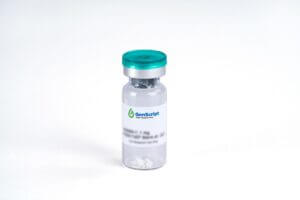
CNTF, Human
$1,073.81 Add to cart View Product DetailsCiliary Neurotrophic Factor (CNTF) is a cytokine belonging to the Interleukin 6 (IL-6) family, which also includes IL-6, Oncostatin M, Leukemia Inhibitory Factor (LIF), and Cardiotrophin-1. Structurally, CNTF resembles a four-helix bundle composition, similar to the other members of the IL-6 family. The receptor for CNTF is composed of three parts: a gp130-like subunit common in the IL-6 receptor family, a LIF Receptor β subunit, and a CNTF specific α receptor subunit. Upon binding to the CNTF, the β subunit of the CNTF receptor will undergo tyrosine phosphorylation, and activate the intracellular JAK/STAT pathway. The main function of CNTF in vivo is to promote the differentiation and survival of a variety of neurons and glial cells, including sympathetic precursor cells and spinal motor neurons.
-
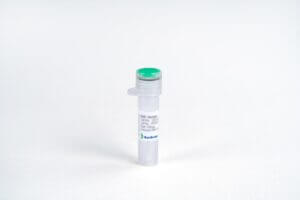
CNTF, Human
$63.83 Add to cart View Product DetailsCiliary Neurotrophic Factor (CNTF) is a cytokine belonging to the Interleukin 6 (IL-6) family, which also includes IL-6, Oncostatin M, Leukemia Inhibitory Factor (LIF), and Cardiotrophin-1. Structurally, CNTF resembles a four-helix bundle composition, similar to the other members of the IL-6 family. The receptor for CNTF is composed of three parts: a gp130-like subunit common in the IL-6 receptor family, a LIF Receptor β subunit, and a CNTF specific α receptor subunit. Upon binding to the CNTF, the β subunit of the CNTF receptor will undergo tyrosine phosphorylation, and activate the intracellular JAK/STAT pathway. The main function of CNTF in vivo is to promote the differentiation and survival of a variety of neurons and glial cells, including sympathetic precursor cells and spinal motor neurons.
-

CNTF, Human
$155.25 Add to cart View Product DetailsCiliary Neurotrophic Factor (CNTF) is a cytokine belonging to the Interleukin 6 (IL-6) family, which also includes IL-6, Oncostatin M, Leukemia Inhibitory Factor (LIF), and Cardiotrophin-1. Structurally, CNTF resembles a four-helix bundle composition, similar to the other members of the IL-6 family. The receptor for CNTF is composed of three parts: a gp130-like subunit common in the IL-6 receptor family, a LIF Receptor β subunit, and a CNTF specific α receptor subunit. Upon binding to the CNTF, the β subunit of the CNTF receptor will undergo tyrosine phosphorylation, and activate the intracellular JAK/STAT pathway. The main function of CNTF in vivo is to promote the differentiation and survival of a variety of neurons and glial cells, including sympathetic precursor cells and spinal motor neurons.
-

CNTF, Mouse
$2,238.19 Add to cart View Product DetailsCiliary neurotrophic factor (CNTF) is a polypeptide hormone whose actions appear to be restricted to the nervous system where it promotes neurotransmitter synthesis and neurite outgrowth in certain neuronal populations. CNTF was initially identified as a trophic factor for embryonic chick ciliary parasympathetic neurons in culture. Furthermore, the protein is also a potent survival factor for neurons and oligodendrocytes and may be relevant in reducing tissue destruction during inflammatory attacks. In addition, CNTF is useful for treatment of motor neuron disease and it could reduce food intake without causing hunger or stress. Recombinant murine CNTF containing 198 amino acids and it shares 82 % and 95 % a.a. sequence identity with human and rat CNTF.
-

CNTF, Mouse
$90.56 Add to cart View Product DetailsCiliary neurotrophic factor (CNTF) is a polypeptide hormone whose actions appear to be restricted to the nervous system where it promotes neurotransmitter synthesis and neurite outgrowth in certain neuronal populations. CNTF was initially identified as a trophic factor for embryonic chick ciliary parasympathetic neurons in culture. Furthermore, the protein is also a potent survival factor for neurons and oligodendrocytes and may be relevant in reducing tissue destruction during inflammatory attacks. In addition, CNTF is useful for treatment of motor neuron disease and it could reduce food intake without causing hunger or stress. Recombinant murine CNTF containing 198 amino acids and it shares 82 % and 95 % a.a. sequence identity with human and rat CNTF.
-

CNTF, Mouse
$293.25 Add to cart View Product DetailsCiliary neurotrophic factor (CNTF) is a polypeptide hormone whose actions appear to be restricted to the nervous system where it promotes neurotransmitter synthesis and neurite outgrowth in certain neuronal populations. CNTF was initially identified as a trophic factor for embryonic chick ciliary parasympathetic neurons in culture. Furthermore, the protein is also a potent survival factor for neurons and oligodendrocytes and may be relevant in reducing tissue destruction during inflammatory attacks. In addition, CNTF is useful for treatment of motor neuron disease and it could reduce food intake without causing hunger or stress. Recombinant murine CNTF containing 198 amino acids and it shares 82 % and 95 % a.a. sequence identity with human and rat CNTF.
-

CNTF, Rat
$1,323.94 Add to cart View Product DetailsCiliary Neurotrophic Factor (CNTF) is a polypeptide hormone which acts within the nervous system where it promotes neurotransmitter synthesis and neurite outgrowth in certain neuronal populations. CNTF is a potent survival factor for neurons and oligodendrocytes and may play a role in reducing tissue damage during increased inflammation. A mutation in this gene, which results in aberrant splicing, leads to ciliary neurotrophic factor deficiency, however this phenotype is not causally related to neurologic disease.
-

CNTF, Rat
$63.83 Add to cart View Product DetailsCiliary Neurotrophic Factor (CNTF) is a polypeptide hormone which acts within the nervous system where it promotes neurotransmitter synthesis and neurite outgrowth in certain neuronal populations. CNTF is a potent survival factor for neurons and oligodendrocytes and may play a role in reducing tissue damage during increased inflammation. A mutation in this gene, which results in aberrant splicing, leads to ciliary neurotrophic factor deficiency, however this phenotype is not causally related to neurologic disease.
-

CNTF, Rat
$155.25 Add to cart View Product DetailsCiliary Neurotrophic Factor (CNTF) is a polypeptide hormone which acts within the nervous system where it promotes neurotransmitter synthesis and neurite outgrowth in certain neuronal populations. CNTF is a potent survival factor for neurons and oligodendrocytes and may play a role in reducing tissue damage during increased inflammation. A mutation in this gene, which results in aberrant splicing, leads to ciliary neurotrophic factor deficiency, however this phenotype is not causally related to neurologic disease.
-

Complete eBlot L1 Transfer sandwich (PVDF)
$372.60 Add to cart View Product DetailsEach kit contains 2x 1L eBlot L1 PVDF Membrane Transfer Buffer (5X), 2x 15mL eBlot L1 PVDF Membrane Equilibration Buffer (10X), 2x 30pK eBlot L1 Transfer Sponge and 2x 15pK eBlot L1 PVDF Membrane. The kit is for 30x transfers with standard program.
-

cPass™ SARS-CoV-2 Neutralization Antibody Detection Kit
$853.88 Add to cart View Product DetailsThe GenScript SARS-CoV-2 Surrogate Virus Neutralization Test (sVNT) Kit can detect circulating neutralizing antibodies against SARS-CoV-2 that block the interaction between the receptor binding domain of the viral spike glycoprotein (RBD) with the ACE2 cell surface receptor. The assay detects any antibodies in serum and plasma that neutralize the RBD-ACE2 interaction. The test is both species and isotype independent.
The SARS-CoV-2 sVNT Kit is a blocking ELISA detection tool, which mimics the virus neutralization process. The kit contains two key components: the Horseradish peroxidase (HRP) conjugated recombinant SARS-CoV-2 RBD fragment (HRP-RBD) and the human ACE2 receptor protein (hACE2). The protein-protein interaction between HRP-RBD and hACE2 can be blocked by neutralizing antibodies against SARS-CoV-2 RBD.
First, the samples and controls are pre-incubated with the HRP-RBD to allow the binding of the circulating neutralization antibodies to HRP-RBD. The mixture is then added to the capture plate which is pre-coated with the hACE2 protein. The unbound HRP-RBD as well as any HRP-RBD bound to non-neutralizing antibody will be captured on the plate, while the circulating neutralization antibodies_HRP-RBD complexes remain in the supernatant and get removed during washing. After washing steps, TMB solution is added, making the color blue. By adding Stop Solution, the reaction is quenched and the color turns yellow. This final solution can be read at 450 nm in a microtiter plate reader. The absorbance of the sample is inversely dependents on the titer of the anti-SARS-CoV-2 neutralizing antibodies. -
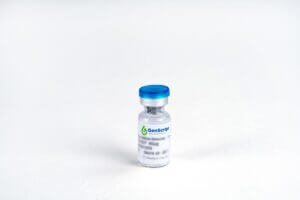
Cre Recombinase Antibody, mAb, Mouse
$97.46 Add to cart View Product DetailsRecombinant Cre recombinase from E.coli expression systems.
-

CRP (2R4), mAb, Mouse
$38.81 Add to cart View Product DetailsC-reactive protein (CRP) is synthesized in the liver by macrophage. Its level in blood increases when inflammation occurs. CRP serves as a useful marker for diagnosis of inflammation. High-sensitivity C-reactive protein (hsCRP), can serve as a risk marker for the diagnosis of myocardial infarction, ischemic stroke, peripheral vascular disease. Measuring hsCRP in blood is helpful to provide positive treatment of the disease.



